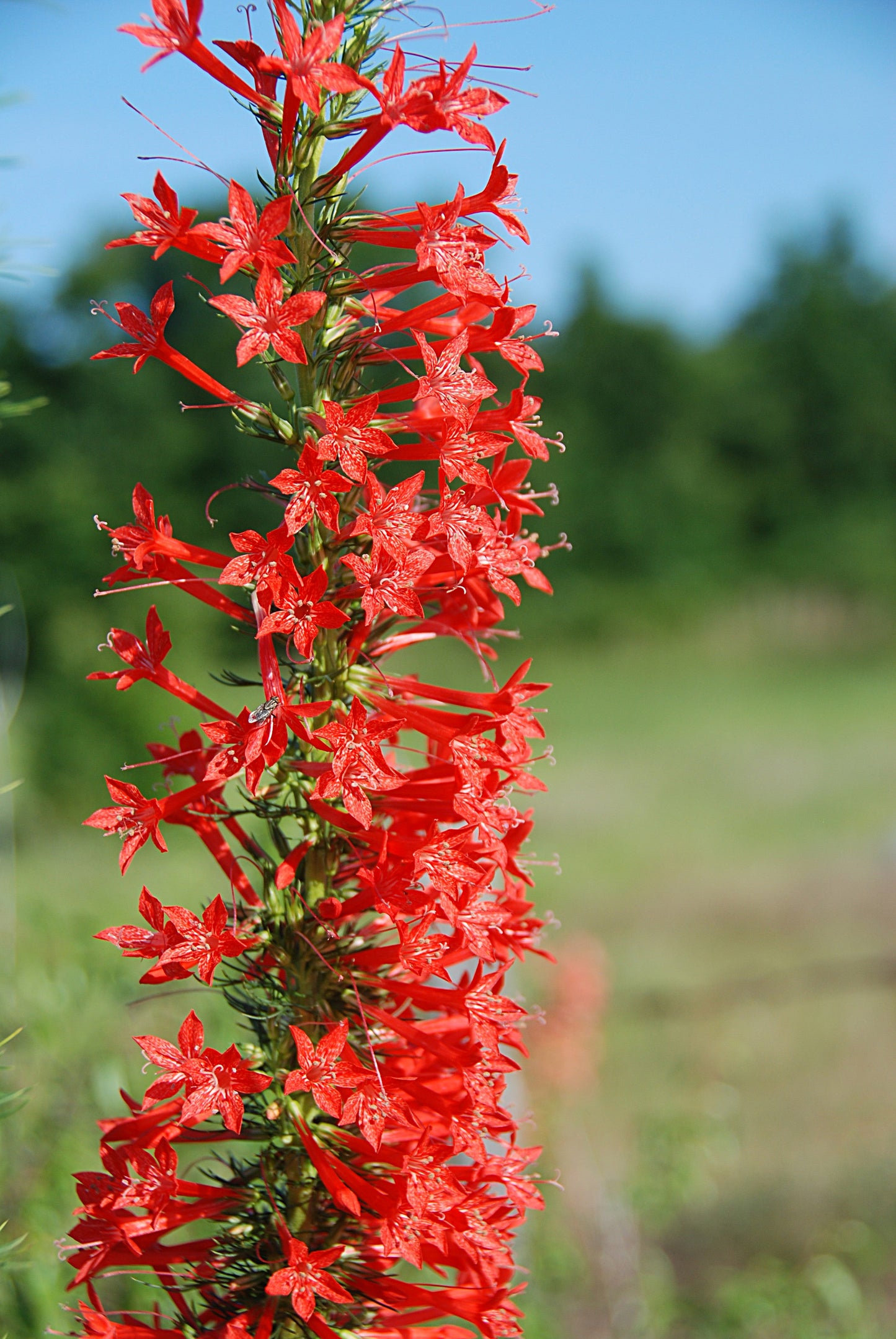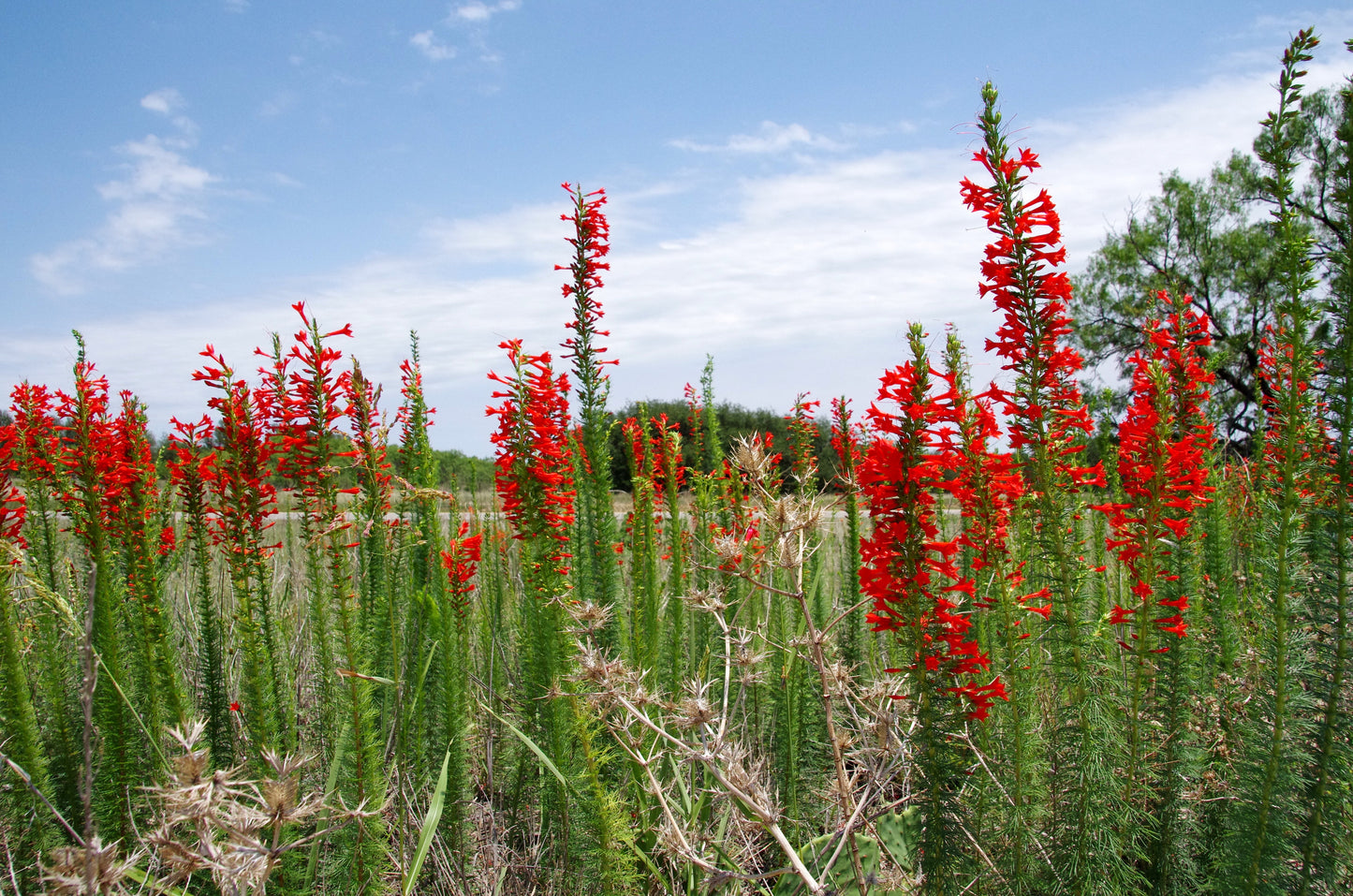NaN
/
of
-Infinity
Floridaseeds
Standing Cypress 1200 Seeds Scarlet Gilia Ipomopsis rubra USA Company
Standing Cypress 1200 Seeds Scarlet Gilia Ipomopsis rubra USA Company
Regular price
$18.99 USD
Regular price
$24.99 USD
Sale price
$18.99 USD
Unit price
/
per
Shipping calculated at checkout.
Couldn't load pickup availability
The Standing Cypress is a stunningly beautiful American wildflower that has bright red flowers on a long stalk. Ipomopsis rubra, a member of the phlox family, is an erect biennial or short-lived perennial which is native to the southeastern U.S. Features narrow, unbranched, leafy stems (2-6' tall) which are topped in summer with narrow, spike-like panicles of red tubular flowers. Each flower has a narrow corolla tube (to 1" long) which flares at the end to form a five-lobed star. Flowers are scarlet red on the outside and yellow dotted with red on the inside. Finely divided, feathery, pinnate leaves (to 1" long) with thread-like segments. Has acquired a large number of regional common names including standing cypress, scarlet gilia, red gilia, Texas plume, flame flower, Indian plume and Spanish larkspur. It is called the standing cypress because its leaves resemble the feathery branchlets of the bald cypress tree and it has a tall, upright, unbranched stem. It is called the scarlet gilia because it is related to gilia plants, which mostly have blue flowers. The flowers are a source of nectar for hummingbirds. Mass in sunny borders, cottage gardens, wild gardens, native plant gardens or naturalized areas. Easily grown in average, dry to medium, well-drained soil in full sun. Tolerates some light shade. Hardy in zones 6-9.
Growing Instructions for the Standing Cypress
- The seeds like well-drained soil. Use a sterile seed starter mix, if available. It prevents soil fungi from damaging the seeds and the seedlings. If not available, then make a mixture of half potting soil and half sand, perlite or vermiculite. 2. Sow the seeds 1/8 of an inch deep. 3. Water the mixture so that it is moist but not wet. 4. Place the pots in an area with warm temperatures in full sun or part shade. 5. When the seedlings are a few inches tall, they can be transplanted.








